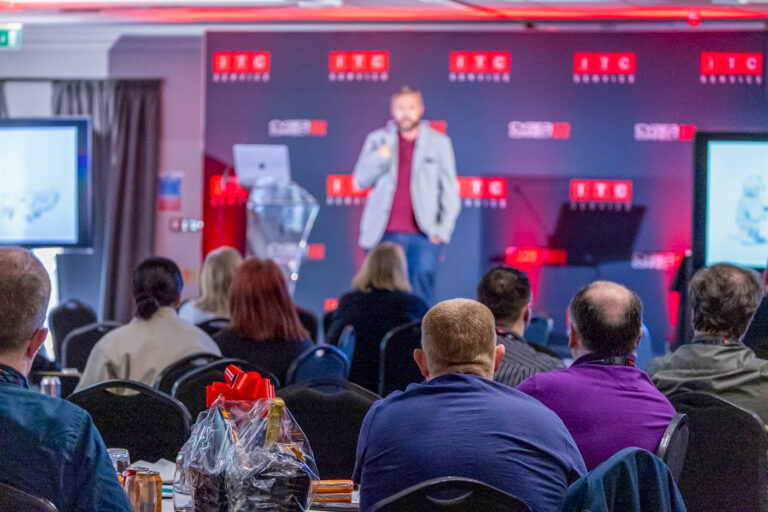For IT technicians, no two days are the same. They could be working remotely, solving technical problems for clients all over the world or be on-site at a client’s office, troubleshooting issues and supplying training to staff. No matter what the day holds, they’re always on the lookout for ways to help businesses run more smoothly and efficiently.
In this blog post, we’ll take a closer look at the day-to-day life of an IT technician. We’ll explore the different tasks they do and the challenges they face. By the end, they’ll have a better understanding of what a day in the life looks like as an IT technician.

The varied roles of an IT support technician.
There are many IT Technician roles. One such role is delivering reactive IT support so when someone has an issue, a ticket gets raised and the engineer is dedicated to getting their problem resolved on time to meet the SLA.
Another IT support role is the ‘proactive monitoring engineer’. Good IT companies will have a dedicated team that use ultramodern tools to ensure their device and servers are healthy, virus free and successfully backing up data. These systems run 24/7 and ensure the team don’t miss a thing and will usually catch errors before the client even realises something is wrong.
Thirdly, On-site Engineers is a very hands on role as they spend most of their time visiting clients to resolve issues that remote IT support can’t quite fix. Typically, these jobs involve hardware replacement or developing their internal infrastructure. This is a very intense role as they will have to use their interpersonal skills to help explain what the problem is to the client and let them know how things are getting on
Starting a day as a remote IT technician
Most IT technicians will start their day by checking their ticketing system. Ensuring that they haven’t missed any urgent requests from clients. Once they’ve dealt with any pressing matters and client requests, they will start working on their project backlog. This could involve anything from figuring out new methods to improve cyber security, or creating tools that will allow ‘quick wins’
IT technicians have many varying tasks. They are part problem-solver, part educator, and part customer service representative. They need to be able to handle a wide range of problems, from fixing software glitches to supplying support and guidance to clients on using new applications.
One of the most important aspects of being an IT technician is staying up to date with the latest hardware and software updates. New updates can often fix existing problems or provide new features and functionality that businesses need. By keeping up to date, they can make sure that their clients are always using the best possible technology. Out-of-date software can pose risk to cyber security – any good IT team will do everything in their power to ensure software is not vulnerable.
Even with all their experience and expertise, there will be days when they’re stumped by a problem. That’s why it’s important to stay calm and think creatively when troubleshooting. Often, the solution is right in front of them – it just takes thinking outside-the-box to see it. Should an issue become too complex, there are procedures in place to escalate the ticket to an specialist engineer, who will hopefully know exactly how to solve the issue.

Utilising remote IT support
Instant support without having to wait for an engineer to visit site sounds pretty excellent right? With the rapid developments in technology and the change in working relationships since Covid-19. It’s now easier than ever to connect with clients all over the world. This development has really changed the technology industry. Remote support engineers can often resolve more issues in a day’s work than on-call engineers. This is due to the reduction in travel time and being able to quickly react to issues virtually as well as quick access to each computer using virtual machines.
More positives to using remote it supports include cost saving as the technician will not need to visit the site and therefore the issue is likely to get resolved faster and sometimes even cheaper! Secondly, you can help reduce carbon emissions by allowing the technician to stay where they are and not use the car or transport to reach you. You’ll be able to get back to your work a lot faster than if the technician needed to travel, collect equipment and troubleshoot.
There are a few things to keep in mind when working remotely, though. Given the support is hugely reliant upon consistent internet connection. It’s important that the engineer and the customer has a reliable connection. Additionally, the tools required to remote onto a PC can be complex, so working knowledge of remote desktop solutions and software is key.
On-site IT support
Some engineers love visiting clients workplaces and prefer to work on-site. This allows them to get a better understanding of their business and their IT needs, which in turn will improve their knowledge of the customer. Working at a customers workplace can often be demanding, but it’s also very rewarding. It gives them the opportunity to build relationships with customers.
When working at a businesses premises , it’s important to dress professionally and be respectful of their space. They need to be prepared to work long hours if needed. This is often the case when clients have unfortunate problems that aren’t just quick fixes.
Working as an IT technician day to day can be challenging, but also incredibly rewarding. They get to use their skills and knowledge to help businesses run more smoothly and efficiently. They get to stay up to date on the latest hardware and software developments. So, if they’re looking for a career that’s both challenging and rewarding, consider becoming an IT technician!













